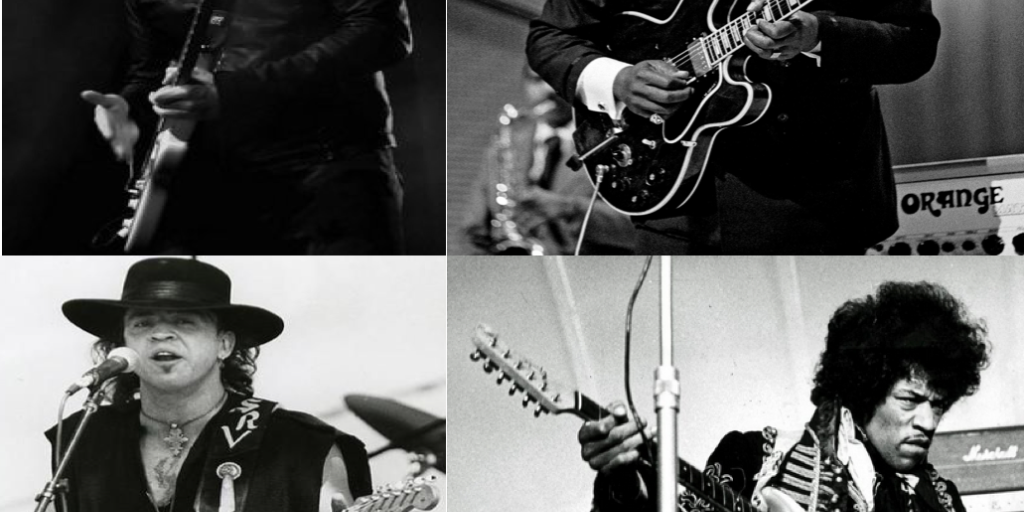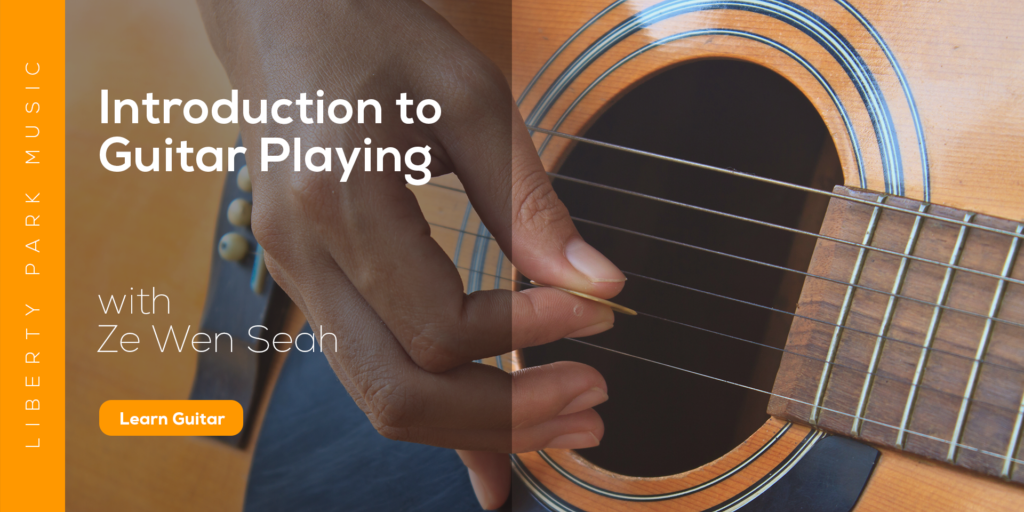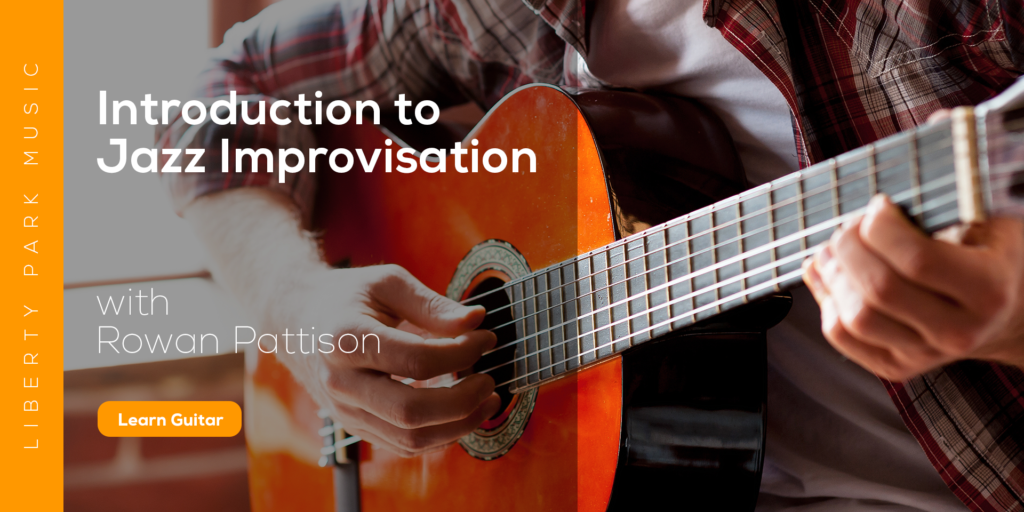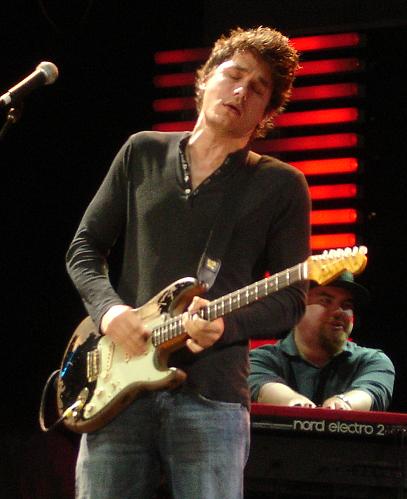
John Mayer is arguably one of the most influential guitarists of our time and has shown this through his technical ability, songwriting skills, and paying homage to the great blues players of previous generations. Recreating his sound is something that millions of guitarists like us try endlessly to perfect. I am sure you can now see how having the right guitar and amp may not get you sounding exactly like John Mayer, it’s all about paying equal attention to technique, sound, stylistic approach, and then of course--plugging this all into the right amp!
Now that we’ve covered John Mayer’s influences, techniques, and equipment, lets devise a practice regime to help internalise the John Mayer sound through mastering these techniques.
Fretting notes with the left thumb
Fretting notes with the left thumb is an integral part of John Mayer’s technique, and we can safely say this is the easiest technique of his to master. Try using this technique when playing your usual repertoire and practicing different strumming patterns.
First, let’s base our practice regime around a blues progression. Play an standard A blues using your thumb to fret the barre chords:
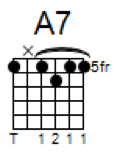
|A7 |A7 |A7 |A7 |
|D7 |D7 |A7 |A7 |
|E7 |D7 |A7 |E7 |
Use the A7 on the 5th fret. When you fret the bass note with your thumb, you can then use this shape for the E7 (7th fret) and D7 (5th fret)
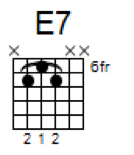
This will help practice changing between the use of the thumb and fretting left hand technique. Focus deeply on the groove of your playing and pick rhythms that suit the bluesy style, it can be as simple as playing quarter notes.
Finger style/Double stops
Second, to get used to double stops and using fingerstyle in an electric blues setting, let’s apply these techniques to this blues progression.
Over an A7 chord (The tonic chord of A blues) you can use notes from the major and minor pentatonic, theoretically it seems wrong, but it’s the combination of these two key qualities that gives the signature bluesy sound. Double stops in blues and particularly John Mayer’s style often work best when using fourths. Take these 4 double stops from the minor pentatonic scale and try them over your A blues

Now try this lick that incorporates the major and minor pentatonic:

Hammer-ons and Pull-offs
The next step builds on the above double stops. Practice hammering on and pulling off these double stops, using different combinations. Play the hammer on by taking the fretted notes and then using the pressure of your left hand to press on the next note, creating the note without the need to pick it. It’s quite literally hammering on with your fingers, the result is a smoother sound to the note, eliminating the articulation that the pick gives. A pull-off is the opposite, when you pull your finger off the note, the note under it will sound, again you do not need your picking hand.
In almost any case in blues music, hammering on or pull-offs will make your music groove and feel natural. The result of this technique gives us what is called legato, it is achieved by removing some of the attack and articulation from the note and creating a smooth transition between the previous note played both tonally and dynamically. Additionally, you can practice this technique using the pentatonic scale! As you practice this technique, practice laying as much of the scale legato as you can, this will strengthen your fretting hand too.
Learn with LPM
If you are looking to feel comfortable with playing basic major and minor chords, power chords, and apply different strumming techniques to your practices with Ze, check out his course called Rhythm Guitar
Bends
Bending is probably the most important technique of blues guitar. Getting your bends right is crucial to playing great sounding guitar solos. The concept is that we are bending one note to reach to another. When learning to bend we must focus on the destination--where do we want this note to reach? We can do this by teaching our muscle memory how far we need to bend.
For example, take the A minor pentatonic scale. We will pick two strong notes from the scale: the root and fifth. For the root, we will start the note on the seventh and bend up until we reach the root. Play the root first (5th fret of E string) to get the pitch in your head, then bend up from the seventh until you reach this pitch. When we bend the note, use the strength of the fingers behind the one fretting the note to help push the finger up. We almost always will use our third finger for bends, as this is by far the strongest.

Now let’s do the same with the fifth, start from the fourth and bend up a full step until you reach the fifth. Remember to play the reference pitch first to train your ear.

Focus hard on the pitch and how quickly you reach the pitch, too long and it sounds out of tune but too fast and it will sound less bluesy. Remember to use the first and second fingers to support your third finger bends.
Licks over chords
And finally, we can combine these techniques with the chords we played earlier. The great thing about John Mayer is that he blends the world of comping and soloing into one giving us the chords and harmony while still letting loose into a raging guitar solo!
Play the 12 bar blues in A using your thumb chord for the A7 and slowly add in licks using the double stops, hammer-ons, and bends. You can base these licks around the A pentatonic scale on the 5th fret. This should be very accessible from the A7 chord which is also on the 5th fret. See what notes and double-stops from the scale you can reach while holding that A7 chord.
What John Mayer does to be so popular and influential is to create something fresh from his skill set and education. Emulating the world's best musicians is probably the most valuable skill in learning and mastering an instrument. We can learn so much from transcribing and copying the techniques of those we admire. We can see in John Mayer’s playing that he has studied some of the great blues players, emulated them, copied their licks and techniques. We can also see how John has studied the art of pop music and songwriting and how he has taken melodic and harmonic ideas from pop artists in the last few decades. The most important lesson we can take is that he has blended all these techniques to become a voice of his own. Although we can hear influence of B.B King, Stevie Ray Vaughan, and Jimi Hendrix in his playing, it is fresh and has become a voice of his own. When you practice these techniques, apply them to songs that you like and they will eventually become part of your own voice.
More About the Teacher
Rowan Pattison is an Australian jazz and contemporary guitarist. His resumé boasts artists such as American singer Bobby Arvon (Happy Days), Broadway star Michelle Murlin, American Idol finalist Lou Gazzara, Marcus Terrel from America’s Got Talent, Vegas Trumpet prodigy Greg Bohnam and American Comedian James Stevens III, who is featured regularly on The Tonight Show and Comedy Central. Now based in Melbourne, Rowan has just lead his own trio concert Impressionism of Bill Evans on a tour of Europe playing concerts in Kyiv, Lviv, Krakow and Paris. Rowan's guitar courses with Liberty Park Music include the Introduction to Jazz Improvisation and Introduction to Solo Guitar.




